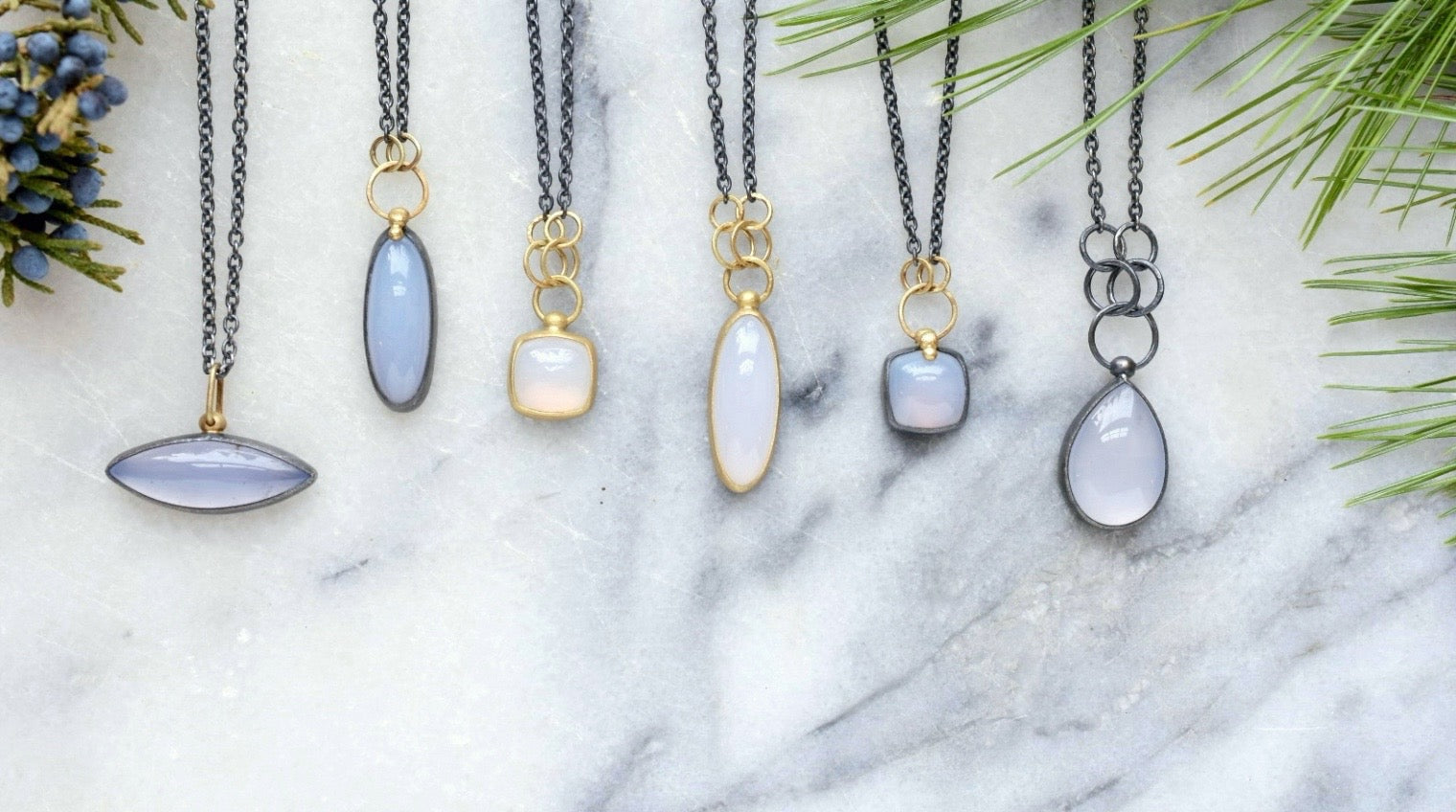Keshi pearls are wonderfully unique and naturally formed. Cultured round pearls are created by introducing a round shell or 'nucleus' into the mollusk to guide the shape and size of the pearl. Keshi pearls form naturally with no nucleus inside so they are pure pearl.

"Keshi are a happy accident of pearl culture. If the oyster manages to push out the shell nucleus after the pearl culturing operation, the small piece of mantel tissue that was also placed inside the oyster, can still create a small pearl. The result is a 100% solid, non-nucleated pearl called a keshi. Keshi are often small and extremely baroque although they can also grow quite big and can be smooth and round." Kamoka Pearl

Keshi's are pure nacre (the lustrous shell of a cultured pearl) and sold by weight, just like gemstones. Being pure pearl they have a luminous glow like nothing else you've seen. I'm drawn to creating jewelry with keshi pearls because it feels like the most sustainable purchase I can make. Using the by-product of an industry opens up the conversation about what the industry standard for beautiful is. When we as consumers utilize the whole catch, we create a market and demand therefore paying the farmers a fair price for all the work that goes into the process. That is the most sustainable practice when we are able to sustain the people that provide for us.

The perfect round pearl is no doubt lovely, but I find the undulating, watery keshi pearl breathtaking.




Comment
They come in a range of free shapes, as their growth is rather random. The term Keshi can refer to any type of either fresh or saltwater pearl that was formed and developed without a nucleus.
https://erijewelry.com/blogs/news/permanent-jewellery-brisbane